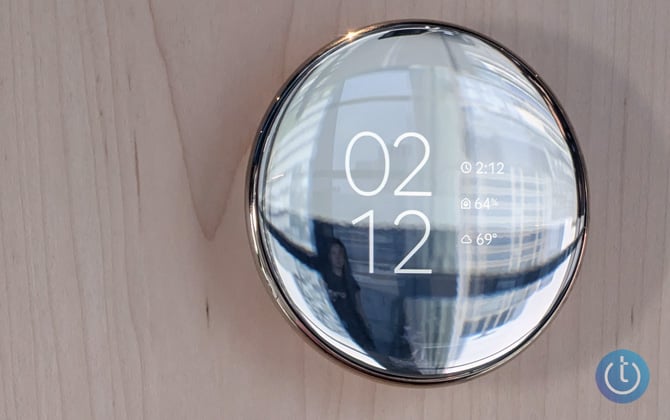Updated: You can still get the Nest Learning Thermostat 4th Gen on sale for $229 ($50 off) on Cyber Monday.
Know someone looking to make their home more energy efficient? Here's a holiday gift that combines stunning design with smart functionality: Google's latest Nest Learning Thermostat is now $50 off the usual price of $279. I've been using a Nest smart thermostat for years, and this fourth-generation model represents a remarkable leap forward in both aesthetics and functionality.

The design alone makes this new Nest a showstopper. It looks more like a piece of modern art than a traditional thermostat, with its 60% larger 2.68-inch display floating behind elegant dome-shaped glass. The front panel features a sophisticated mirrored finish, available in gold, black, or silver. The new "Dynamic Farsight" interface is equally elegant, automatically adjusting its display based on how far away you are. From across the room, you'll see large, easy-to-read weather and temperature information, while moving closer reveals more detailed data and controls.
The thermostat not only looks beautiful but actually helps people save money while making their homes more comfortable. A major upgrade is the redesigned temperature sensor that now comes included in the box. This sleek, pebble-like device can be placed anywhere in your home – on a shelf or mounted on a wall – ensuring more precise temperature control throughout the space. The thermostat can coordinate multiple sensors, to more effectively eliminate those annoying hot and cold spots that plague many homes.
The system adapts to each person's lifestyle, suggesting money-saving adjustments you can enable (or ignore). Usually $279, it's now on sale for Cyber Monday at just $229 – making this premium smart home upgrade an even more attractive gift option for anyone looking to make their home both smarter and more efficient in the new year.
[Image credit: Suzanne Kantra/Techlicious]
Andrea Smith is an award-winning technology broadcast journalist, reporter, and producer. Andrea was the Technology Producer and an on-air Technology contributor at ABC News for over two decades before becoming the Lifestyle Channel Editor at Mashable, where she explored the ways in which real people, not just geeks, began using technology in their everyday lives.

















